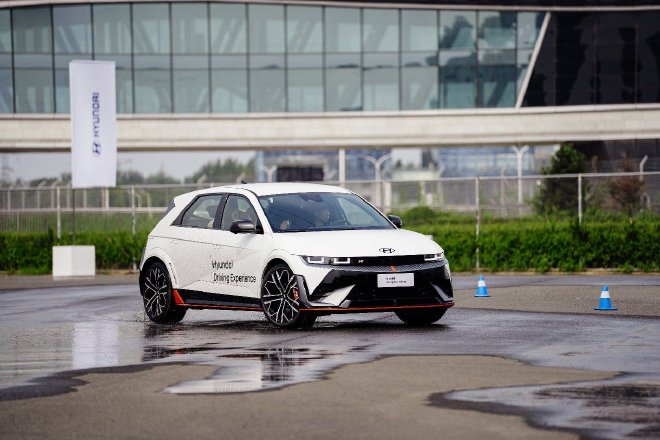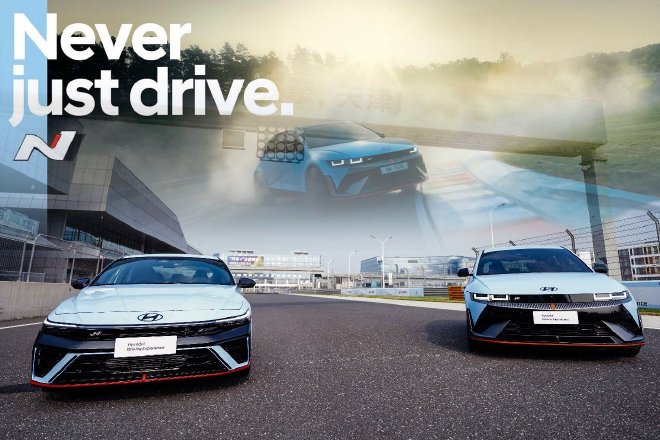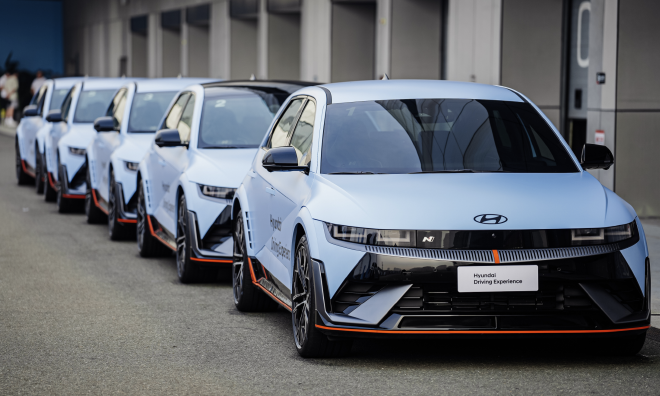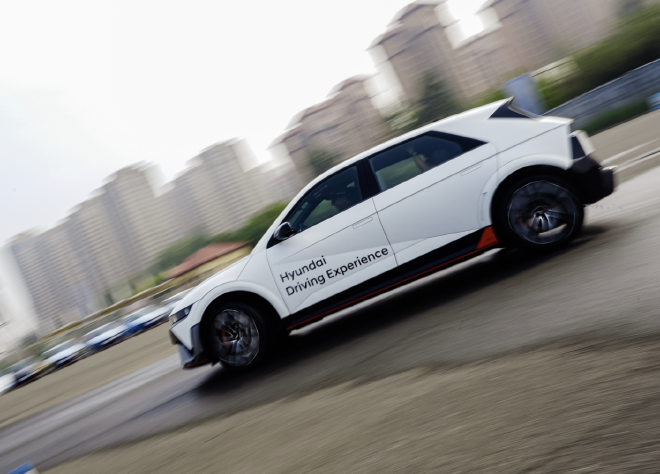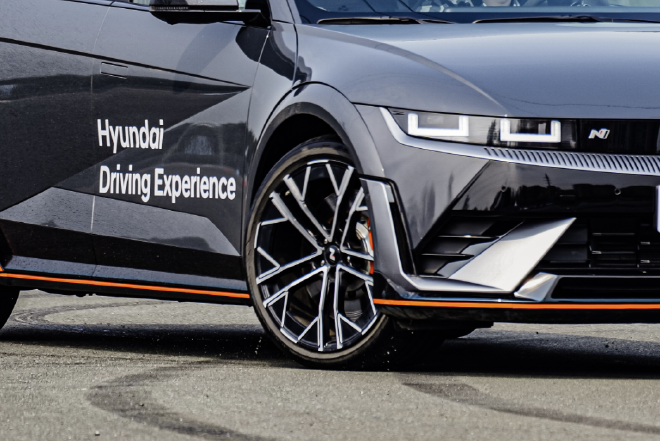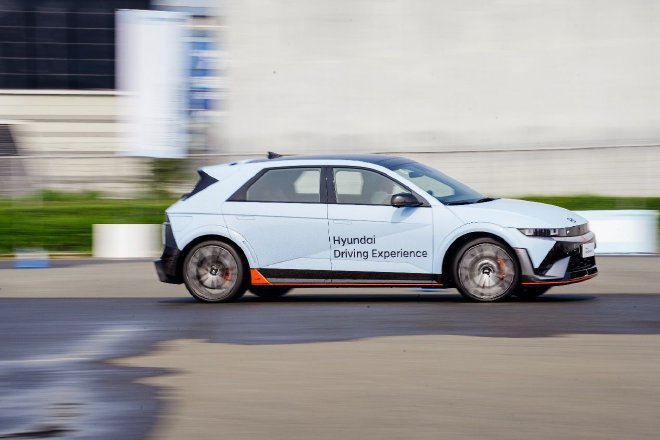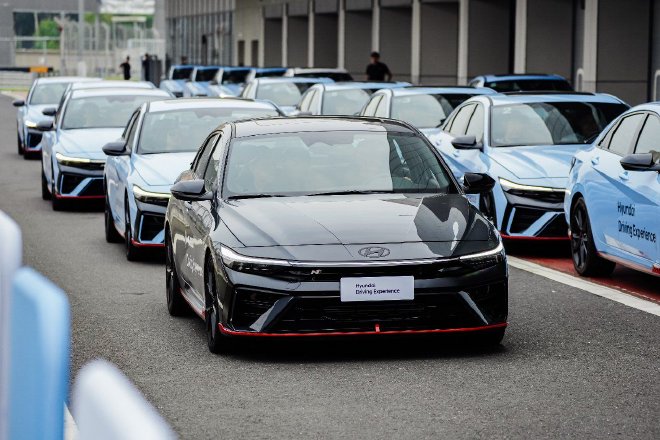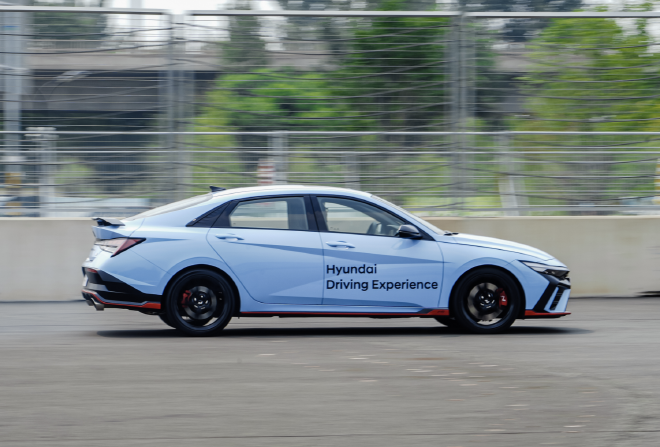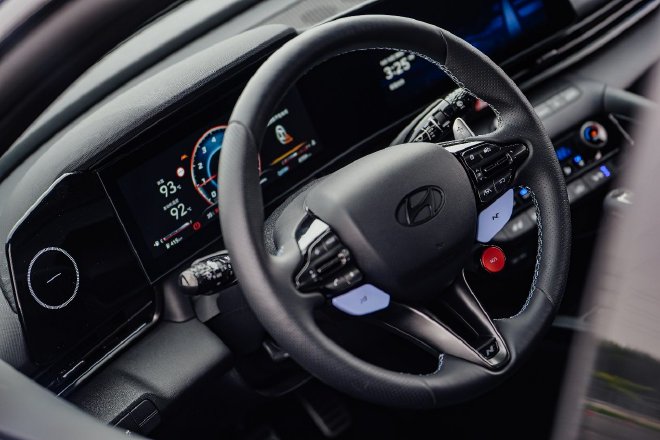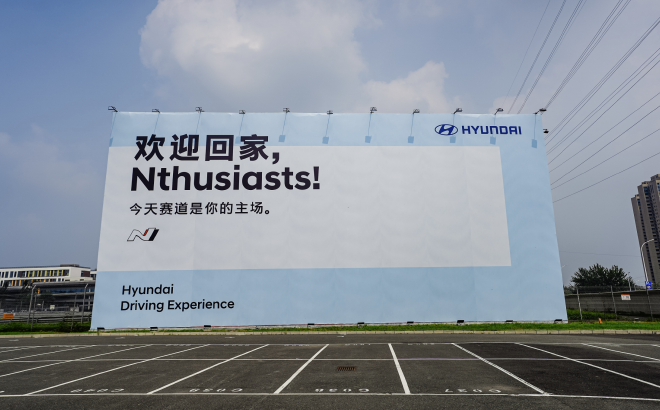Today, few car companies in the Chinese market promote track culture and offer track driving training. Hyundai stands out among them. It has introduced several high-performance models. In August 2024, the Hyundai Driving Academy will open. At the bustling Tianjin V1 Circuit, Hyundai will showcase the 2024 Elantra N and IONIQ 5 N. Drivers can fully experience them on the track.
The IONIQ 5 N is gaining popularity in the racing circle. This is the first time domestic media experience its dynamic performance. It excites fuel car enthusiasts as one of the few pure electric vehicles that can do so. Key points: 1. What does Hyundai’s “N” brand represent? 2. The IONIQ 5 N is powerful and has a strong racing vibe. 3. It stays cool. The ability to maintain this is a key highlight of the IONIQ 5 N. 4. The Elantra N looks ordinary but can race on the track. Ordinary racing fans should take note. Why does Hyundai love racing so much? Many Chinese consumers see Hyundai as a family-oriented brand. However, Hyundai has a sporty side. You can spot Hyundai cars in major global events. They also have a dedicated high-performance brand, the N brand. Today, we test drive two models under this brand. Before diving into the test drive, let’s discuss why Hyundai is so passionate about racing and share some background on the N brand.
Hyundai began developing high-performance engines and models in the 1990s. During this time, it launched several high-performance engines and sports cars. This showcased Hyundai’s genetic affinity for performance. In 2015, the N brand emerged. The N brand represents Hyundai’s performance identity, much like AMG for Mercedes and M Power for BMW.
The N brand originates from a competitive track. Its slogan is “Never just drive.” It values the joy of driving. The goal is to help people enjoy driving in everyday life, not just in racing. Modern Automotive integrates experiences from top global events into N brand production models. This approach offers consumers more driving pleasure and higher performance.
Racing is the foundation of the N brand. It serves as the stage for the N brand to prove itself. To transfer racing experience and technology to production cars, Hyundai created the Rolling Lab. This initiative ensures every N production car inherits and embodies the brand’s high-performance DNA—cornering agility, daily driving, and track performance.
Rolling Lab has two masterpieces: RN22e and N Vision 74. These concept cars showcase the N brand’s deep exploration of high-performance electrification. They also highlight its vision for the future. The RN22e serves as the original concept for the IONIQ 5 N. The main event is the IONIQ 5 N.
On June 20, the IONIQ 5 N launched pre-sales in China. The starting price is 398,800 yuan (55750$). Like the previously introduced Elantra N, the IONIQ 5 N offers a competitive price. It is lower than prices in South Korea, the United States, and Australia.
The IONIQ 5 N has a unique position. It combines three attributes: electric, high-performance, and SUV. In the past, these traits rarely merged in one vehicle. The IONIQ 5 N achieves this blend. For the N brand, the IONIQ 5 N represents the start of high-performance electrification. They aim to deliver thrilling driving experiences in today’s electric era.
The IONIQ 5 N originates from the E-GMP platform. It is a medium-sized SUV. It features a dual motor layout with a front motor delivering 175 kW and a rear motor providing 303 kW. The design leans towards a rear-wheel-drive setup. It includes an 84 kWh ternary lithium battery. The imported version of the IONIQ 5 N in China retains its original features. It only changes the charging interface to meet Chinese electric vehicle standards and updates the vehicle’s interface to Chinese.
The true highlight of the IONIQ 5 N is its thermal management technology. Many electric cars in the domestic market show impressive performance. They often excel in lap times. However, they struggle with heat dissipation. They cannot maintain performance over multiple laps. The IONIQ 5 N stands apart. Its efficient and advanced thermal management system supports continuous performance. It can complete two laps at the Nürburgring. It can also run eight laps at the Shanghai International Circuit. This performance surpasses many fuel cars in stock condition.
During the test drive event, Hyundai gave the IONIQ 5 N little chance to rest. The team conducted continuous high-intensity tests. The performance remained stable. The N Race has two modes: “Sprint” and “Endurance.” In “Sprint” mode, the IONIQ 5 N prioritizes full power for driving. In “Endurance” mode, it maximizes track range. This mode limits peak power during acceleration to reduce temperature rise, significantly enhancing durability. Besides system management, the IONIQ 5 N features high-spec cooling hardware. It includes large cooling areas and enhanced motor oil cooling and battery cooling systems.
The cooling system works well. However, electric vehicles face a drawback during intense driving: high curb weight. This weight demands a robust braking system. The IONIQ 5 N features a high-performance braking system. Its front and rear brake discs measure 400mm and 360mm, respectively. It uses a lightweight mixed metal for the integrated four-piston front calipers with high-friction brake pads. The system includes dedicated air ducts. These features provide strong braking power and durability. Additionally, the N Brake Regen energy recovery system enhances performance. It can recover energy with a force of up to 0.6G, reducing the burden on the braking system.
During the first test drive, the car delivers a strong sensory experience. N Active Sound+ simulates engine sounds and provides high-performance effects like backfire and sound explosions. N e-Shift further mimics the sounds and vibrations of an eight-speed dual-clutch transmission during shifts. On the track, I forgot I was driving a pure electric vehicle. The IONIQ 5 N feels solid in handling. It offers clear road feedback. When braking hard and entering a corner, the front stability impresses. Despite being an SUV, it controls body roll exceptionally well. The body rigidity is ample. Its agility and solid handling make me question—am I really driving an SUV? A brief test of the Elantra N follows.
The Elantra N launched at last year’s Guangzhou Auto Show. It offers two configurations. Prices are 249,800 yuan (34920$) and 263,800 yuan (36880$). The car features a 2.0T engine. It delivers a maximum power of 276 Ps and peak torque of 392 N·m. The 8-speed dual-clutch transmission, developed by Hyundai for high-performance vehicles, provides very fast shifting. It ranks among the best in its price range.
The Elantra N features a dual-clutch transmission. This transmission excels on the track. In track mode, it uses an aggressive shifting strategy. Downshifts feel crisp and immediate. It efficiently extracts every horsepower from the engine.
In the curves, you can clearly feel the Elantra N’s front axle features an electronic limited-slip differential. It effectively reduces understeer in most situations. Compared to typical aftermarket limited-slip differentials, this system remains unobtrusive. You can adjust the locking rate from the central touchscreen.
Overall, the Elantra N stands out as a strong high-performance front-wheel drive car. Its track performance rivals that of the Honda Type-R, priced at 420,000 yuan (58720$) in China. The Elantra N starts at just 249,800 yuan (34920$). The performance-to-price ratio is clear. It originates from a family car design. It features four doors, five seats, and a sedan body. The high configuration enhances its practicality in the performance car segment. However, do not expect luxury or high-quality interior materials. The budget focuses on performance.
